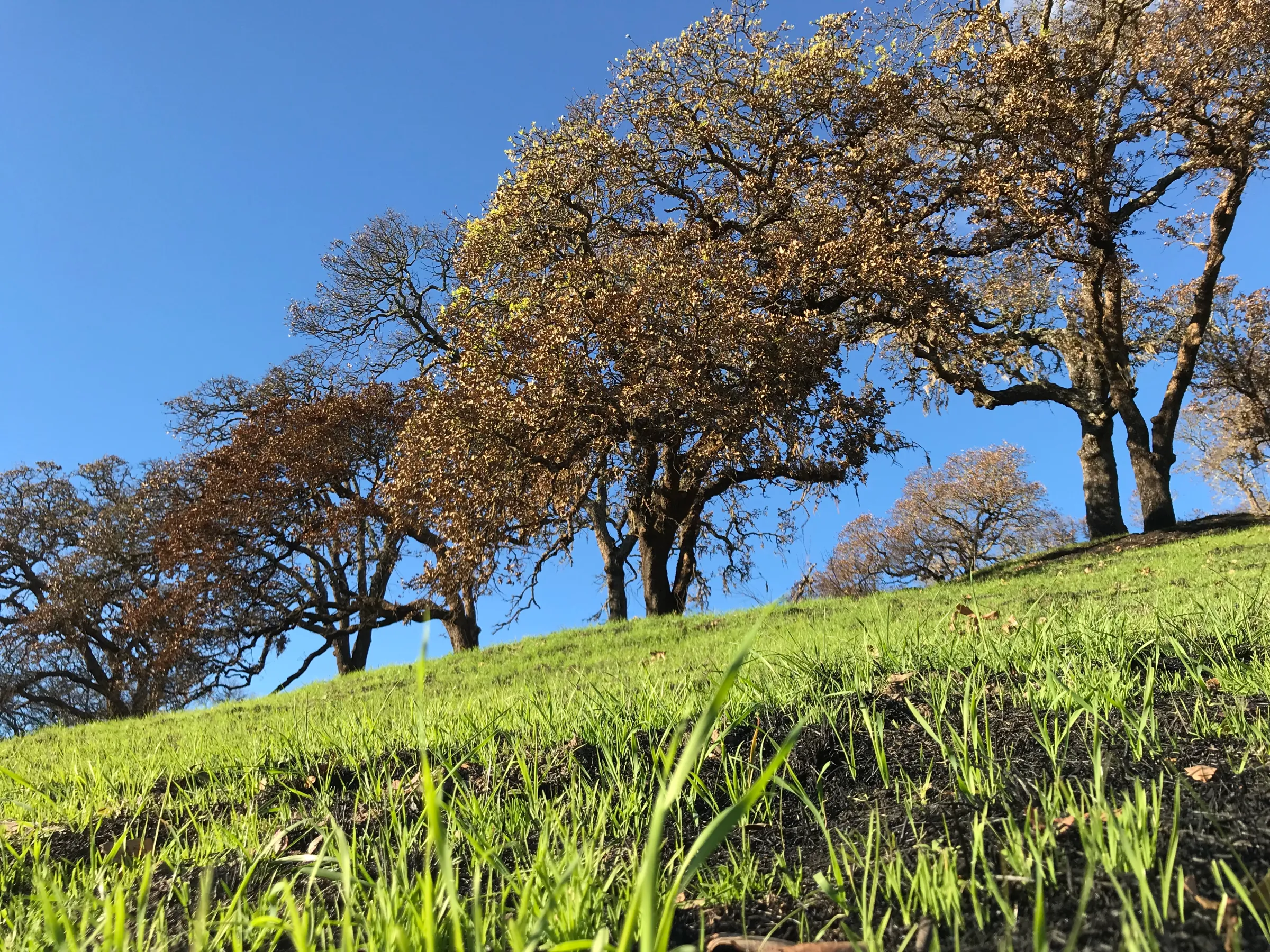With the fires in Ventura County, I think we can call it official; our heavy fuel loads have come home to roost. A week ago I could convince myself, while drinking a beer and listening to rain patter on the roof, that the fires that destroyed our home were an anomaly. No, they are the Brave New Normal. To address this problem, we have to go beyond the favorite California pastime of beating up on PG&E*.
Previously, I made the case for reducing heavy fuel loads for biodiversity and aesthetic reasons. Afterall, biodiversity and aesthetics are flip sides of the same coin. This week I am going to focus on the three tools we have for reducing heavy fuel loads in our landscape.
Three Ways to Address Heavy Fuel Loads
- Prescribed Fire-Even though the ecological community strongly supports the use of fire in the ecosystem, I have rarely considered it . This is because, on the California Coast, lightning is rare. How would fires start before the arrival of humans? Fire competes with living things for the same fuel. Fire burns vegetation that can never again feed something. In addition, air quality in the Bay Area is already compromised. ‘Controlled’ fires can quickly get out of control. So there are modern hurdles to the use of prescribed fire, as well as prehistoric ones. But I now see that this is such a big problem that we need to welcome different approaches. In some circumstances we are going to find that fire is the best way manage vegetation. Afterall, if we avoid the fires we can stop, only to create much larger fires we cannot stop, that isn’t sustainable. Regulators can help landowners conduct safe prescribed burns. That being said, we are going to find only so many ways to increase the use of fire in our region.
- Mechanical Vegetation Removal- Managers can use chainsaws, bulldozers, mowers, forwarders, etc, to manage vegetation. These mechanical monsters seem the opposite of ‘natural.’ But the ecosystem currently has heavy fuel loads which are also unprecedented. These technologies can often create conditions that are more in line with the evolutionary history of the ecosystem than the so-called ‘force of nature,’ fire. I think that we should get over our biases around these machines and become more comfortable with their use all over the landscape, including inside parks. As an ecosystem manager, I find it much easier to reduce biodiversity by not cutting enough trees and shrubs than by cutting too many trees and shrubs. As I’ve said, biodiversity and public safety are closely tied on this issue. But all this costs money. This sort of work is important but it can be shockingly expensive. It has to compete with all the other things that we ‘should’ be doing in the world.
- Grazing- Grazing is the most important process missing from the ecosystem. In 1950, virtually everyone saw fire as an unambiguously negative force in the ecosystem today. Seventy years later, ecologists routinely overstate fire’s value, in my opinion. Grazing is in the early stages of gaining this acceptance in the ecological community. It is an excellent way to reduce heavy fuels in difficult terrain. That being said it is not as economical in places like Sonoma and Ventura Counties as it is in Nebraska, or Brazil. But this is the sort of work we cannot outsource to a different region with cheaper land and labor. We need to make it work here somehow. I neglected to graze our Glen Ellen property for the first time in six years because I was up in Oregon. I thought surely I could get away with it. Don’t be dumb like me. Had I followed my own advice in this posting it’s possible that our home would be more than a smudge on the forest floor near Glen Ellen
In my previous post I argued that one of the chief arguments for buying local beef is that those animals manage your local landscape. When we manage those animals well they can make our landscape more biodiverse and more beautiful. In the wake of these fires, we need to remember that livestock can make the landscape safer as well.
*PG&E is the electric utility whose powerlines were implicated in the Sonoma County fires

